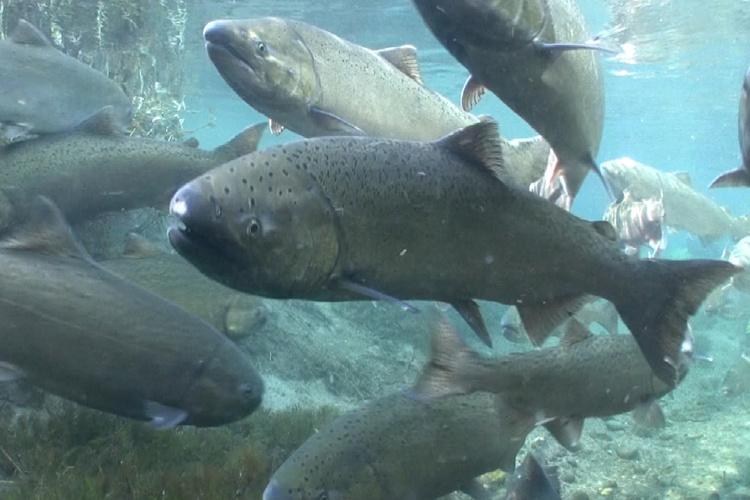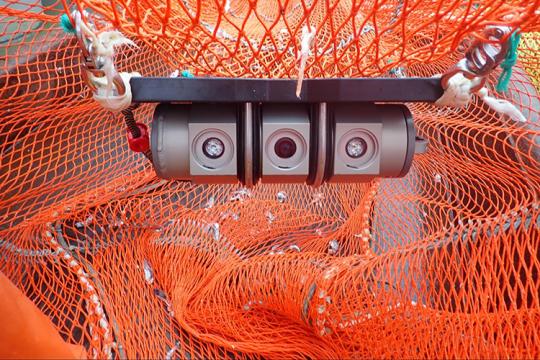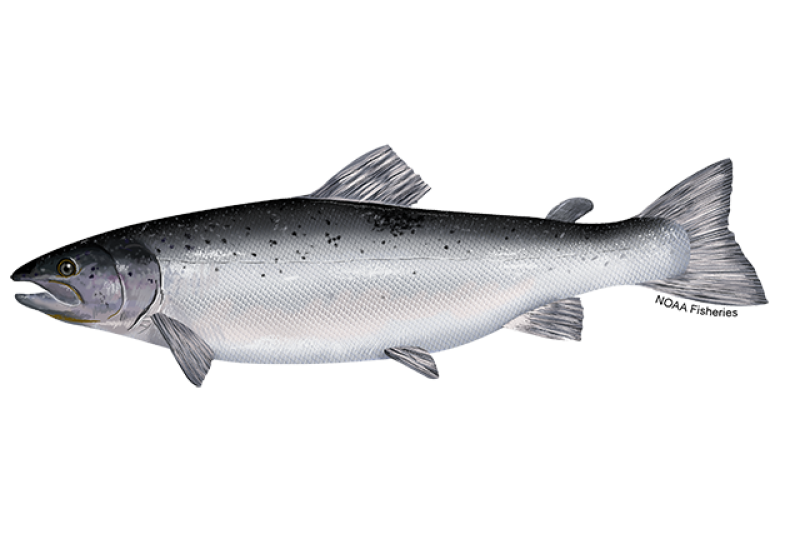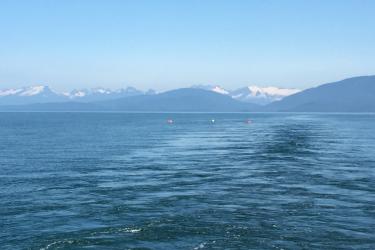Chinook Salmon (Protected)
Chinook Salmon (Protected)
Oncorhynchus tshawytscha

Protected Status
Upper Columbia River spring-run
Central Valley spring-run
Lower Columbia River
Puget Sound
Snake River fall-run
Snake River spring/summer-run
Upper Willamette River
Upper Columbia River spring-run in the Okanogan River subbasin XN
Central Valley spring-run XN Shasta
Sacramento winter-run XN Shasta
Central Valley spring-run XN Yuba
Oregon Coast
Southern Oregon and Northern California Coastal
Quick Facts
 Spring Chinook Salmon. Credit: Michael Humling, U.S. Fish & Wildlife Service
Spring Chinook Salmon. Credit: Michael Humling, U.S. Fish & Wildlife Service
Spring Chinook Salmon. Credit: Michael Humling, U.S. Fish & Wildlife Service
About the Species
 Spring Chinook Salmon. Credit: Michael Humling, U.S. Fish & Wildlife Service
Spring Chinook Salmon. Credit: Michael Humling, U.S. Fish & Wildlife Service
Spring Chinook Salmon. Credit: Michael Humling, U.S. Fish & Wildlife Service
Chinook salmon are anadromous fish, which means they can live in both fresh and saltwater. Chinook salmon have a relatively complex life history that includes spawning and juvenile rearing in rivers followed by migrating to saltwater to feed, grow, and mature before returning to freshwater to spawn. They are vulnerable to many stressors and threats including blocked access to spawning grounds and habitat degradation caused by dams and culverts. Two species of chinook salmon are listed as endangered under the Endangered Species Act, seven species are listed as threatened under the ESA, and one species is a candidate for listing under the ESA.
The Sacramento River Winter-run Chinook is one of NOAA Fisheries' Species in the Spotlight.
NOAA Fisheries is committed to conserving and protecting chinook salmon. Our scientists and partners use a variety of innovative techniques to study, learn more about, and protect this species.
Scientific Classification
| Kingdom | Animalia | Phylum | Chordata | Class | Actinopterygii | Order | Salmoniformes | Family | Salmonidae | Genus | Oncorhynchus | Species | O. tshawytscha |
|---|
Last updated by NOAA Fisheries on 06/23/2025
Featured News
 Sexton trawl camera used to collect video footage inside pollock trawls to test the effectiveness of bycatch reduction devices in nets. Credit: NOAA Fisheries.
Sexton trawl camera used to collect video footage inside pollock trawls to test the effectiveness of bycatch reduction devices in nets. Credit: NOAA Fisheries.
Faster Analysis of Data to Evaluate Bycatch Reduction Efforts in Pollock Fishery
 An excavator digs a new stream channel while a dump truck unloads stones to recreate the stream bed on Resurrection Creek. Credit: Molly Feltner/NOAA
An excavator digs a new stream channel while a dump truck unloads stones to recreate the stream bed on Resurrection Creek. Credit: Molly Feltner/NOAA
 Chinook salmon migrating upstream. Credit: Adobe Stock
Chinook salmon migrating upstream. Credit: Adobe Stock
Oregon Tribe Partners with Agricultural Producers to Restore Salmon and Steelhead Habitat
 NOAA Fisheries scientists sort fish during the spring 2024 Rockfish Recruitment and Ecosystem Assessment Survey. These surveys reveal a coastal ocean dominated by a booming population of northern anchovy in recent years. Photo Credit: NOAA Fisheries.
NOAA Fisheries scientists sort fish during the spring 2024 Rockfish Recruitment and Ecosystem Assessment Survey. These surveys reveal a coastal ocean dominated by a booming population of northern anchovy in recent years. Photo Credit: NOAA Fisheries.
In the Spotlight
Sacramento River Winter-Run Chinook
The Sacramento River winter-run evolutionarily significant unit (called an "ESU") of Chinook salmon is one of NOAA Fisheries' Species in the Spotlight. This initiative is a concerted, agency-wide effort launched in 2015 to spotlight and save the most highly at-risk marine species.
Chinook salmon are an iconic part of California's natural heritage that must be preserved in order to ensure the economic and recreational wellbeing of future generations. Millions of wild salmon once returned to spawn in the foothills and mountains of California's Central Valley. Streams fed by rainfall, snowmelt, and cold water springs encircled the valley, fostering a diversity and abundance of Chinook salmon. The endangered Sacramento River winter-run Chinook salmon are particularly important among California's salmon runs because they exhibit a life-history strategy found nowhere else on the West Coast. These Chinook salmon are unique in that they spawn during the summer months when air temperatures usually approach their warmest.
As a result, winter-run Chinook salmon require stream reaches with cold water sources that will protect their incubating eggs from the warm ambient conditions. Because of this need for cold water during the summer, winter-run Chinook salmon historically occurred only in rivers and creeks fed by cold water springs, such as the Little Sacramento, McCloud, and Pit rivers, and Battle Creek.

The construction of Shasta and Keswick dams eliminated access to the Little Sacramento, McCloud, and Pit rivers, effectively causing the extirpation of the winter-run Chinook salmon populations that spawned and reared there. The fish from these different populations were forced to mix and spawn as one population downstream of Keswick Dam on the Sacramento River. The construction and operation of hydropower facilities in Battle Creek made the creek inhospitable to winter-run Chinook salmon, and that population also was extirpated.
The one remaining winter-run Chinook salmon population has persisted in large part due to agency-managed cold water releases from Shasta Reservoir during the summer and artificial propagation from Livingston Stone National Fish Hatchery's winter-run Chinook salmon conservation program. Thus, winter-run Chinook salmon are dependent on sufficient cold water storage in Shasta Reservoir, and it has long been recognized that a prolonged drought could have devastating impacts, possibly leading to the species' extinction.
Threats

Currently, Shasta and Keswick dams block winter-run Chinook salmon from nearly all of their historical spawning habitat. The spawning habitat that is accessible is subject to water temperatures that are too warm to support egg and fry survival, particularly during droughts, some of which have been very severe in recent years.
In addition to lost and degraded spawning habitat, 98 percent of riparian and floodplain habitat along the Sacramento River is no longer available to support juvenile rearing. Other threats to winter-run Chinook salmon include water withdrawals, predation by non-native species, lack of quality rearing habitat in the Sacramento-San Joaquin Delta, and commercial and recreational fisheries.
Species Recovery
In 2014, NOAA Fisheries adopted a plan to recover Sacramento River winter-run Chinook salmon, as well as Central Valley spring-run Chinook salmon, and Central Valley steelhead.
State and federal agencies, public organizations, non-profit groups and others in California's Central Valley have formed strong partnerships to save Sacramento River winter-run Chinook salmon. Efforts to protect winter-run Chinook salmon include restoring habitat, utilizing conservation hatchery programs, closely monitoring the population, and carefully managing scarce cold water. Additional key actions needed to safeguard winter-run Chinook salmon from further declines include:

- Improving management of Shasta Reservoir's storage in order to provide cold water for spawning adults, eggs, and fry, stable summer flows to avoid dewatering redds, and winter/spring pulse flows to improve smolt survival through the delta.
- Completing the Battle Creek Salmon and Steelhead Restoration Project and reintroducing winter-run Chinook salmon to the restored habitat.
- Reintroducing winter-run Chinook salmon into the McCloud River.
- Improving Yolo Bypass fish habitat and passage so juveniles can more frequently utilize the bypass for rearing and adults can freely pass from the bypass back to the Sacramento River.
- Managing winter and early spring delta conditions for improved juvenile survival.
- Conducting landscape-scale restoration throughout the delta to improve the ecosystem's health and support native species.
- Expanding the Livingston Stone National Fish Hatchery's facilities to support both the captive broodstock and conservation hatchery programs; and
- Evaluating alternative control rules used to limit incidental take of winter-run Chinook salmon in ocean fisheries.
Species in the Spotlight Priority Actions

We developed a Species in the Spotlight 2021-2025 Priority Action Plan that builds on the recovery plan and the 2016-2020 Priority Action Plan and details the focused efforts that are needed over the next five years. The plan lists key actions NOAA Fisheries and its partners can take from 2021 to 2025 to help recover the species. These actions include:
- Improve management of Shasta Reservoir cold water storage
- Restore and reintroduce winter-run Chinook to Battle Creek habitat
- Reintroduce winter-run Chinook salmon into historical habitats above Shasta Dam
- Improve Yolo Bypass fish habitat and passage
- Manage winter and early spring delta conditions to improve juvenile survival
- Collaborative science and fostering partnerships
In our first five years of the Species in the Spotlight, we have:
- Improved Shasta Reservoir cold water management (good survival from egg to juvenile stages since 2016).
- Reintroduced 567,000+ winter-run Chinook salmon into Battle Creek.
- Documented successful spawning and natural production of juveniles in Battle Creek in 2020.
- Improved fish passage conditions with projects completed at the Knights Landing Outfall Gates, Wallace Weir, and Fremont Weir.
- Acoustically tagged winter-run Chinook salmon juveniles annually to get real-time information on distribution to inform water management decisions.
While we still have much to do, these are important steps towards recovery for Sacramento River winter-run chinook salmon.
2017 Species in the Spotlight Hero Award

Lewis Bair, General Manager of Reclamation District 108, has been a leader in northern California water and salmon issues for many years. As part of the Sacramento Valley Salmon Recovery Program, Lewis has helped implement numerous actions to benefit Sacramento River winter-run Chinook salmon. Most notably, Lewis' efforts led to the funding of two major projects. Both projects were included in the 5-year action plan: a fish barrier at the Knights Landing Outfall Gates and the Wallace Weir Fish Rescue Project.
2019 Partner in the Spotlight Award

Randi Field with the U.S. Bureau of Reclamation's MidPacific Region is responsible for operation of the largest reservoir in California, the Shasta Reservoir. Shasta Reservoir stores up to 4.5 million acre-feet of water that meets critical water supply needs for farms and cities. It must also maintain conditions for drinking water and fish protection throughout California. Winter-run Chinook salmon eggs and fry are vulnerable to summer heat. They persist because of the careful operations of the limited cold-water pool deep in Shasta Reservoir.
2021 Partner in the Spotlight Award

John Hannon, U.S. Bureau of Reclamation, has motivated the restoration community in the Central Valley of California and formed strong partnerships among the local communities, farmers, environmental groups, and federal and state agencies. John leads the Sacramento River restoration effort. He has moved projects from conception to construction at an unmatched pace—since 2017, 13 projects were completed, resulting in new spawning areas and approximately 26 new acres of much needed rearing habitat.
2023 Partner in the Spotlight Award

Matt Johnson, California Department of Fish and Wildlife, worked tirelessly to turn initial ideas into on-the-ground actions, resulting in winter-run Chinook salmon being reintroduced to the McCloud River in 2022 for the first time in over 80 years. He fostered a trustful and effective partnership with the Winnemem Wintu Tribe, NOAA Fisheries, and other project partners, and sacrificed the creature comforts of home to camp along the McCloud River throughout the summer and fall to protect remote incubators containing 40,000 endangered salmon eggs from fires, bears, humans, mud, and algae. 2022 was a historic year in the conservation of winter-run Chinook because of Matt’s efforts.
More Information
- Sacramento River Winter-Run Chinook Salmon, 2021–2025 Priority Action Plan
- NOAA Fisheries' Species in the Spotlight Initiative
- Sacramento River Winter-run Chinook Salmon
- Sacramento River Winter-Run Chinook Salmon, 2016–2020 Priority Action Plan
- Recovery Plan for Sacramento River Winter-run Chinook, Central Valley Spring-ru…
- VIDEO: California Drought, Part 1 – Protecting Salmon
- VIDEO: California Drought, Part 2 – A Changing Landscape
- Partners Return Endangered Winter-Run Chinook Eggs to Their Original Habitat in…
Last updated by NOAA Fisheries on 06/23/2025
Management Overview
ESA-Listed Snake River Basin Species
NOAA Fisheries has adopted three recovery plans for the four ESA-listed Snake River basin species: steelhead, spring/summer Chinook salmon, fall Chinook salmon and sockeye salmon. The Snake River Sockeye Recovery Plan was adopted in June 2015. The Snake River Fall Chinook Recovery Plan and Snake River Spring/Summer Chinook Salmon and Snake River Basin Steelhead Recovery Plans were adopted in November 2017.
It is our intent to optimize Recovery Plan implementation through stakeholder involvement to prioritize and implement recovery actions; particularly through NOAA Fisheries’ Snake River Coordination Group.
Learn more:
- Snake River Sockeye Salmon Recovery Plan
- Snake River Fall Chinook Salmon Recovery Plan
- Snake River Spring/Summer Chinook Salmon and Snake River Basin Steelhead Recovery Plan
Status Reviews, Recovery Plans, and Maps
Recovery Planning and Implementation
Species Recovery Contacts
Coastal California Chinook Salmon ESU
- Erin Seghesio, Recovery Coordinator
Sacramento River Winter-Run ESU
- Brian Ellrott, Recovery Coordinator
Central Valley Spring Run ESU
- Brian Ellrott, Recovery Coordinator
Regulatory History
Upper Klamath-Trinity Rivers Chinook Salmon ESU
In 2017, the Karuk Tribe and Salmon River Restoration Council petitioned NOAA to list the Upper Klamath-Trinity Rivers (UKTR) Chinook salmon ESU or, alternatively, create a new ESU to describe Klamath Spring Chinook salmon and list it as threatened or endangered under the ESA.
NOAA Fisheries reviewed the petition and determined that a status review of the Chinook salmon in the UKTR Basin should be conducted.
Spring-run Chinook Salmon in the Oregon Coast ESU
On September 24, 2019, the Native Fish Society, Center for Biological Diversity, and Umpqua Watersheds petitioned NOAA to identify Oregon Coast spring-run Chinook salmon as a separate ESU and list the ESU as threatened or endangered under the ESA. On May 4, 2020, Richard K. Nawa also petitioned NOAA to identify Southern Oregon and Northern California Coastal spring-run Chinook salmon as a separate ESU and list the ESU as threatened or endangered under the ESA.
NOAA Fisheries reviewed both petitions and determined that a status review of Oregon Coast spring-run Chinook salmon and Southern Oregon and Northern California Coastal spring-run Chinook salmon should be conducted.
Upon completion of the status review for Oregon Coast spring-run and Southern Oregon and Northern California Coastal spring-run Chinook, NOAA Fisheries announced a joint 12-month finding on these petitions to list populations of spring-run Chinook salmon as threatened or endangered ESUs under the ESA and to designate critical habitat concurrently with the listings. Based on the best scientific and commercial data available, including the ESU configuration report, NOAA Fisheries determined that listing the Oregon Coast and Southern Oregon and Northern California Coastal spring-run Chinook salmon populations as threatened or endangered ESUs is not warranted. NOAA Fisheries determined that the Oregon Coast and Southern Oregon and Northern California Coastal spring-run Chinook salmon populations do not meet the ESU policy criteria to be considered ESUs separate from the Oregon Coast and Southern Oregon and Northern California Coastal fall-run Chinook salmon populations.
Key Actions and Documents
Yankee Fork and Panther Creek Spring/summer Chinook Hatchery Plans
Calaveras River Habitat Conservation Plan and Environmental Assessment
More Information
- Conserving Salmon and Steelhead on the West Coast
- For Endangered Salmon in California, a Very Measured Sip of Cold Water
- Salmon and Steelhead Hatcheries on the West Coast
- Dams on the West Coast
- What You Can Do to Help Recover Salmon and Steelhead on the West Coast
- Saving Pacific Salmon and Steelhead
Last updated by NOAA Fisheries on 06/23/2025
Science Overview

NOAA Fisheries conducts various research activities on the biology, behavior, and ecology of chinook salmon. The results of this research are used to inform management decisions for this species.
Dive Deeper Into Our Research
Chinook Salmon in Alaska
Our work to forecast salmon harvests, assess the impact of commercial fisheries on salmon, and evaluate how salmon populations respond to environmental changes enable us to estimate abundance and trends for chinook salmon in Alaska.
Chinook Salmon Research in the Pacific Northwest
Our research on Pacific salmon covers several topics including bycatch, salmon harvest forecasts, ecotoxicology, genetics, marine survival and responses to climate change.
Recent Science Blogs
Last updated by NOAA Fisheries on 06/23/2025
Documents
DRAFT Environmental Impact Statement and Regulatory Impact Review for a Proposed Amendment to the Fishery Management Plan for Groundfish of the Bering Sea/Aleutian Islands Management Area - Bering Sea Chum Salmon Bycatch Management
Draft analysis of the impacts of proposed management measures to reduce chum salmon (Oncorhynchus…
Cook Inlet Small Entity Compliance Guide
The Small Entity Compliance Guide (select "View Document" below) contains a summary of regulations…
2024 5-Year Review: Summary & Evaluation of California Coastal Chinook Salmon
Five-year reviews describe whether recovery is on track in the context of the recovery plan,…
Endangered Species Act Section 7(a)(2) Biological Opinion and Magnuson–Stevens Fishery Conservation and Management Act Essential Fish Habitat Response for the Stibnite Gold Project
NMFS Consultation Number: WCRO-2023-02924
Data & Maps
2008: Genetic Stock Composition Analysis Of Chinook Salmon Bycatch Samples From The 2008 Bering Sea Pollock Trawl Fisheries
Alaska Fisheries Science Center Salmon Bycatch Report
Research
GoToWebinar Registration and Joining Instructions
How to register and join meetings for the Alaska Salmon Research Task Force
Frequent Questions—Snow Crab and Salmon Declines in Alaska
NOAA Fisheries answers questions about what is behind the declines in snow crab and salmon and how we are addressing them.
Outreach & Education
Little Port Walter Program Flyer
This program is in NOAA Fisheries Alaska's Auke Bay Laboratories.
Alaska Salmon Research Task Force Meeting Agenda—May 22, 2024
Alaska Salmon Research Task Force Meeting Agenda for May 22, 2024
Alaska Salmon Research Task Force Meeting Agenda—January 25, 2024
Alaska Salmon Research Task Force Meeting Agenda for January 25, 2024
Central Valley Spring-run Chinook Salmon Brochure
Spring-run Chinook salmon were once abundant throughout rivers and creeks in California’s Central…
Last updated by NOAA Fisheries on 06/23/2025







